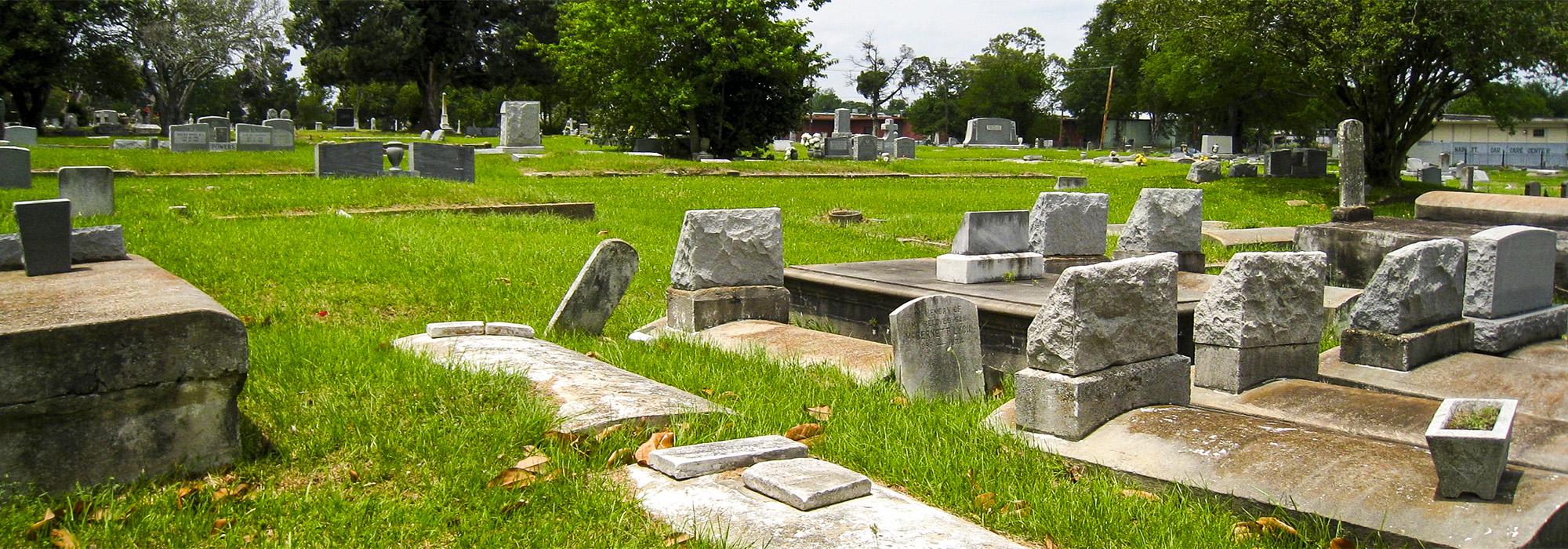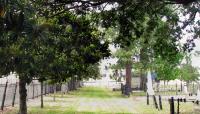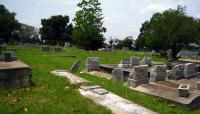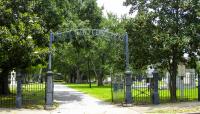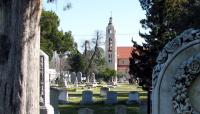In 1852, the city of Baton Rouge purchased ten acres of land on the eastern edge of town from John Christian Buhler, Jr. to establish a municipal cemetery. The subtly rolling terrain comprised open agricultural fields dotted with magnolias and cedar stands. Early burials occurred in the western portion, while the eastern portion was planted with corn for many years. The modest cemetery is better known as the site of a decisive Civil War battle in August 1862, during which Confederate forces were unable to rout Federalist troops from Baton Rouge.
The rectangular parcel, bounded to the north and south by Main and Florida streets, is surrounded by a cast-iron fence erected in 1909. The entrance gate, on 19th Street, bears a decorative iron banner depicting the cemetery’s name. A singular drive, laid out in 1879, runs east to west, with a small roundabout containing a slightly off-centered cruciform structure. Large shade trees line the central axis and western perimeter, while smaller flowering trees dot the lawn. Unlike cemeteries of this era in New Orleans, burials in Magnolia Cemetery are subterranean, marked with plain tombstones or sarcophagi. Family plots, arranged in an orderly grid, are enclosed with stone borders or iron fencing. Since its inception, Magnolia Cemetery has been the resting place for both the city’s prominent white and African-American citizens. It was listed in the National Register for Historic Places in 1985.



